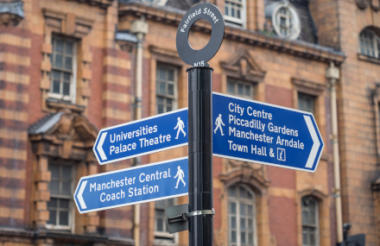Some people may hope that levelling up will be the defining feature of Boris Johnson’s premiership; others may fear it will be nothing more than a footnote in a long history of initiatives that tried, and failed, to reduce regional inequality.
In the absence of any real detail about the policy, the phrase “it will be in the levelling up white paper” has become a shield for ministers and civil servants when pressed for details. For the government’s opponents, the phrase has become something of a joke following several months of delays and prevarication.
Last week the government finally published its white paper about levelling up, a topic that has been talked of endlessly, but has at times felt vague, unspecific and lacking in detailed policy.
And so, now that the paper has finally been published, it’s hopefully time for a more interesting debate about policy direction. And the charity sector will, rightly, be asking whether the government has recognised that civil society must be actively involved to craft and deliver these policies for communities.
Underwhelming
At over 300-pages it is most definitely a long read. In a way this is understandable; the government’s definition of levelling up covers a lot of ground, including: education, transport, employment, housing, communities the environment and more.
Yet when we dig into the report it is, well, just a bit underwhelming. There are long passages setting the historical context, going back a far as 7,000 BC, alongside many, many graphs. Then, when we finally get to the details, little of it feels genuinely new.
Labour shadow minister for levelling up, Lisa Nandy, summed it up in parliament: “Seriously, is this it? The sum total of ambition for our coastal and industrial towns, our villages and our great cities is a history lesson on the rise of the Roman empire, and ministers scurrying around Whitehall, shuffling the deckchairs and cobbling together a shopping list of recycled policies and fiddling the figures. Is this really it?”
Indeed, it turns out some of the waffle at the beginning may have been lifted from Wikipedia. If this was a university essay, the professor may have returned it with a lot of red pen.
Encouraging vision
Charities shouldn’t be too discouraged. The overall tone and ambition is something the sector can certainly get on board with. But this isn’t the blueprint for action that we might have hoped it could be.
A crude way of measuring how engaged the government is with the sector on any given issue is to search for key terms such as “charities” in documents. In this instance, “charities” get mentioned four times.
So, at first it looks like the sector has, once again, been overlooked. But on closer reading, it becomes clear that the themes of social capital, empowering local leaders, and the role of communities, run through the document.
This in itself is a win for those who have been lobbying hard on the importance of incorporating social causes into the levelling up agenda, especially when the early initiatives appeared so focused on roads and bridges.
By and large the sector was encouraged by the direction set out in the paper, but cautious about whether it would deliver. Locality’s CEO Tony Armstrong says: “The white paper sets out a useful long-term framework and several of the measures announced have the potential to put communities in charge of tackling entrenched divides.
“Government has listened to many of the ideas put forward by the community sector on issues like community ownership and neighbourhood governance. To be a long-term success, this power of community needs to be front and centre of the government’s levelling up strategy.”
Similarly, Clare Mills, director of policy and communications at CFG, says: “Civil society has a huge role to play in the government’s levelling up agenda and there is recognition of that in the white paper. Overall, the intentions set out are good, but the path to levelling up remains long.”
Emphasis on data
While the leading theme of the paper is around community empowerment, the second main theme, is around improving the volume and quality of data to understand the impact of interventions.
In doing so the white paper sends the message that the government wants to empower local communities, but on the condition local leaders and groups are then able to prove how they have improved their communities.
This is not a wholly unrealistic or indeed unexpected – just look back at some of the speeches from government ministers lamenting the charity sector’s poor quality or lack of data. And there are plenty of organisations and people within civil society who have been arguing for data for years.
Lacking in action
Brilliant visions are only as good as the action that follows. As anyone who was around for the optimism of the early days of big society under David Cameron or Theresa May’s short-lived shared society will testify.
What the white paper lacks, perhaps inevitably, is any clear plan or new funding mechanisms.
The idea of using dormant assets as a funding mechanism for charities and social enterprises has been around for over a decade. The plans to expand the scope of the scheme, and the funding available, first started in 2015 when Rob Wilson was the charities minister.
Other relevant aspects to the charity sector, such as the focus on young people and volunteering, are topics that governments from all parties devote much energy to “solving”.
One aspect that is worth keeping an eye on is how social value is measured as the levelling up agenda develops. The white paper states that companies bidding for contracts for Birmingham 2022 Commonwealth Games will have their bids judged against social value, with a minimum of 10% of the evaluation weighting dedicated to this.
This goes beyond the minimum requirements set out in the Social Value Act, and while the government has been reluctant to beef up the legislation, as campaigners have called for, a trend towards clearer targets for social value in public sector contracts would be a small step in the right direction.
Where there were new commitments, they were often vague. For example, the paper embraces a recommendation from Pro Bono Economics about creating a civil society satellite account, thus giving government, and charities, a much clearer idea of the scope of the sector’s activity.
But there are no timescales attached to this project, so we will have to wait and see if it comes to fruition.
In another instance, the paper commits to considering improvements to the cumbersome Community Asset Transfer Scheme, again without timescales against which the government could be held accountable.
At this juncture, it is worth highlighting that Michael Gove, levelling up secretary, has emphasised that this is a long-term plan, which he expects to be achieved over a decade.
Hard work starts now
After years of social and community policy being ignored, as politicians have concentrated all their energy on Brexit, it is a relief to finally get started. But the real work starts here.
Ensuring charities are considered, and treated, as partners is still likely to be an uphill battle, especially given the fragile state of the current relationship between the sector and central government.
Levelling up, as a policy, is nowhere near as fully-formed as it could be, or as revolutionary as its architects claim it to be. But politicians and charity leaders are at least using similar language, which is a healthy starting point.
Related articles












